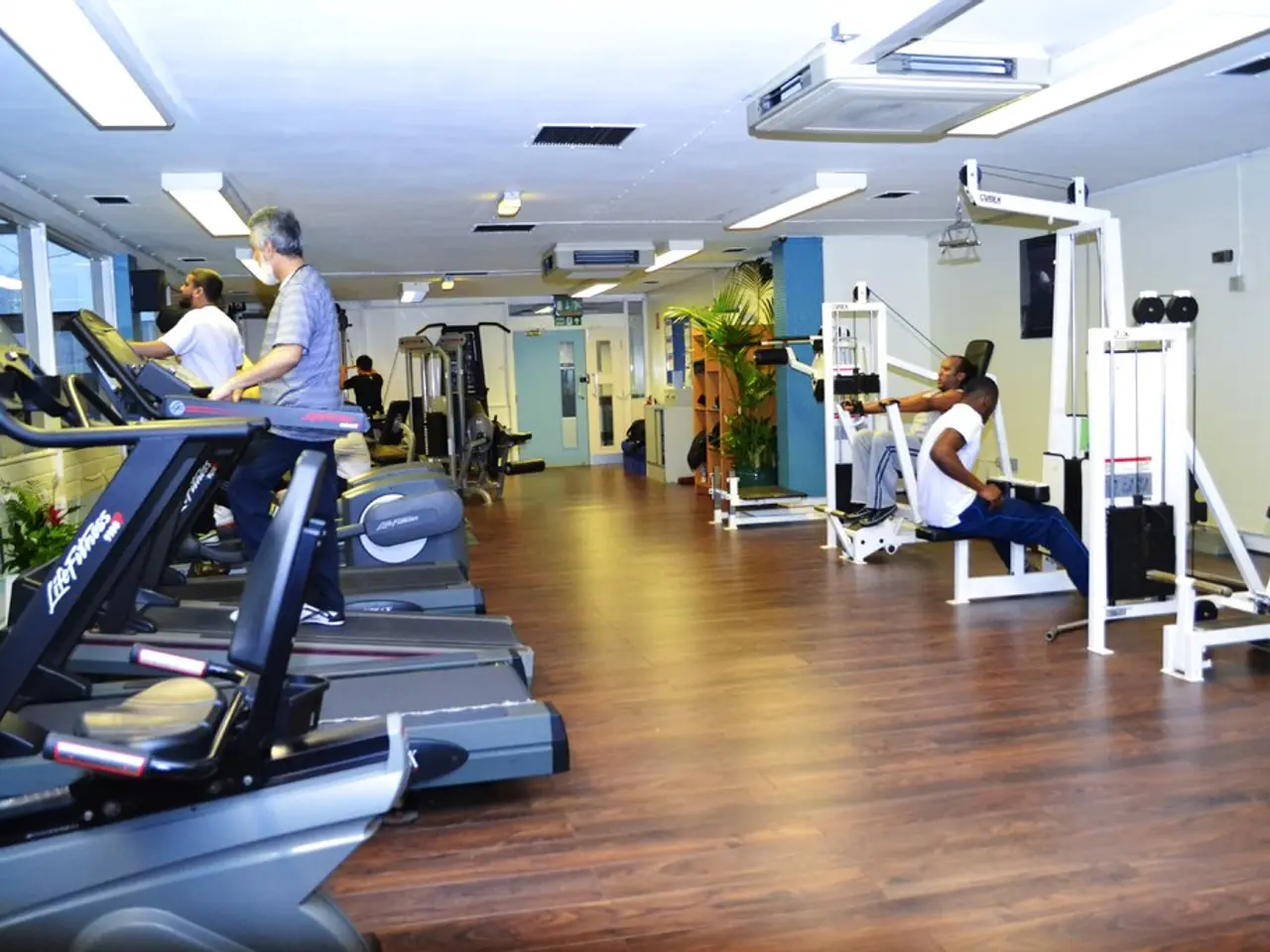Strengthening a specific muscle, according to a physical therapist, can enhance posture and alleviate upper-back discomfort.
Strengthen Your Rotator Cuff for Better Posture and Shoulder Health
Physical therapist Alysha Eibl, renowned for her expertise in posture and shoulder health, often recommends targeted rotator cuff exercises to strengthen the muscles that stabilize the shoulder and improve posture. Here are some exercises she suggests for rotator cuff strengthening:
- Resistance Band Arm Extension
- Attach a resistance band at waist height.
- Bend your elbow at 90 degrees and hold the band with both hands, keeping your arms close to your body.
- Pause for two seconds when pulling the band out and return the band with control for two seconds during the resistance band arm extension exercise.
- Perform controlled repetitions, focusing on form and scapular stability.
- External Rotation with Resistance Band
- Attach a resistance band at waist height.
- Keep your elbow bent at 90 degrees and tucked into your side.
- Rotate your forearm outward, away from your body, against the resistance.
- Perform 15-20 controlled repetitions on each side.
- Internal Rotation with Resistance Band
- Similar setup, but rotate your forearm inward across your body against the band.
- Maintain a 90-degree bend at the elbow and keep your elbow close to the torso.
- Perform 15-20 controlled repetitions on each side.
- Prone Horizontal Abduction (T's)
- Lie face down on a bench or bed with your arms hanging straight down.
- Lift your arms out to the side, forming a "T," with thumbs pointing up, engaging the posterior rotator cuff muscles.
- Hold briefly at the top and lower slowly.
- Scapular Retraction Exercises
- Perform rows or scapular squeezes to enhance shoulder stability, even though they don't directly target the rotator cuff.
- Side-Lying External Rotation
- Lie on your side with the affected arm on top, elbow bent 90 degrees resting on your side.
- Rotate your forearm upward, keeping your elbow tucked in.
- Perform 15-20 controlled repetitions on each side.
Eibl emphasizes the importance of proper technique, gradually progressing resistance, and combining these exercises with posture awareness and mobility work to address shoulder mechanics holistically. By incorporating these rotator cuff exercises into your upper-body workouts, you can improve posture, shoulder function, and the way your shoulder moves and feels.
For a more detailed program or to watch videos demonstrating these movements, feel free to reach out for guidance.
- Incorporating yoga, which focuses on flexibility, may complement these rotator cuff workouts to enhance overall shoulder health and posture.
- The science behind fitness-and-exercise suggests that regular strength training focusing on the rotator cuff can lead to improved health-and-wellness, as it directly addresses shoulder mechanics.
- To achieve optimal results, consider combining rotator cuff workouts with other fitness-and-exercise routines, such as yoga for increased flexibility, and pay attention to maintaining proper technique and progressive resistance in line with Alysha Eibl's advice.




